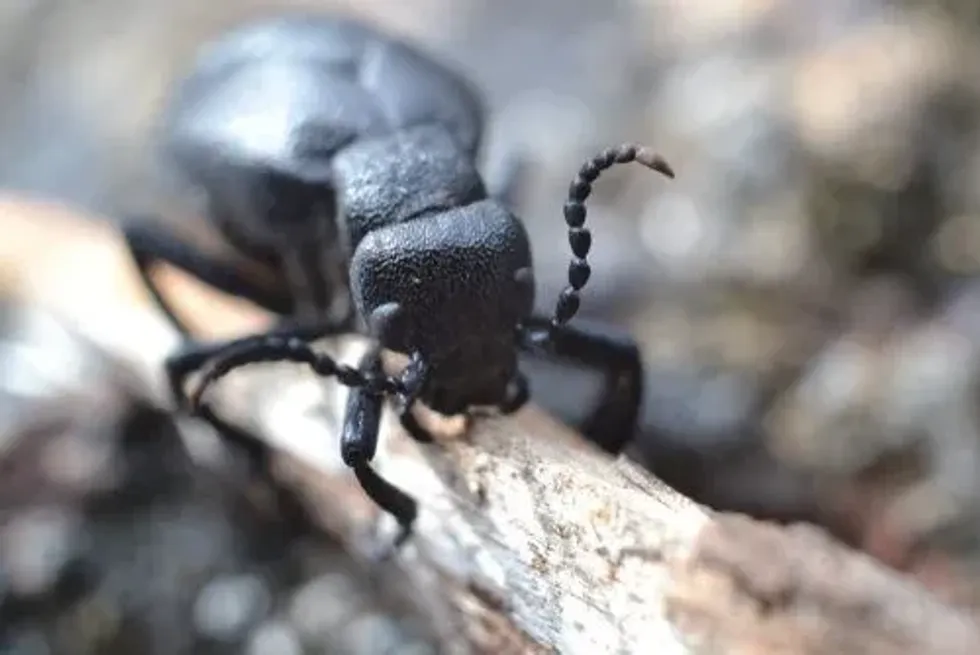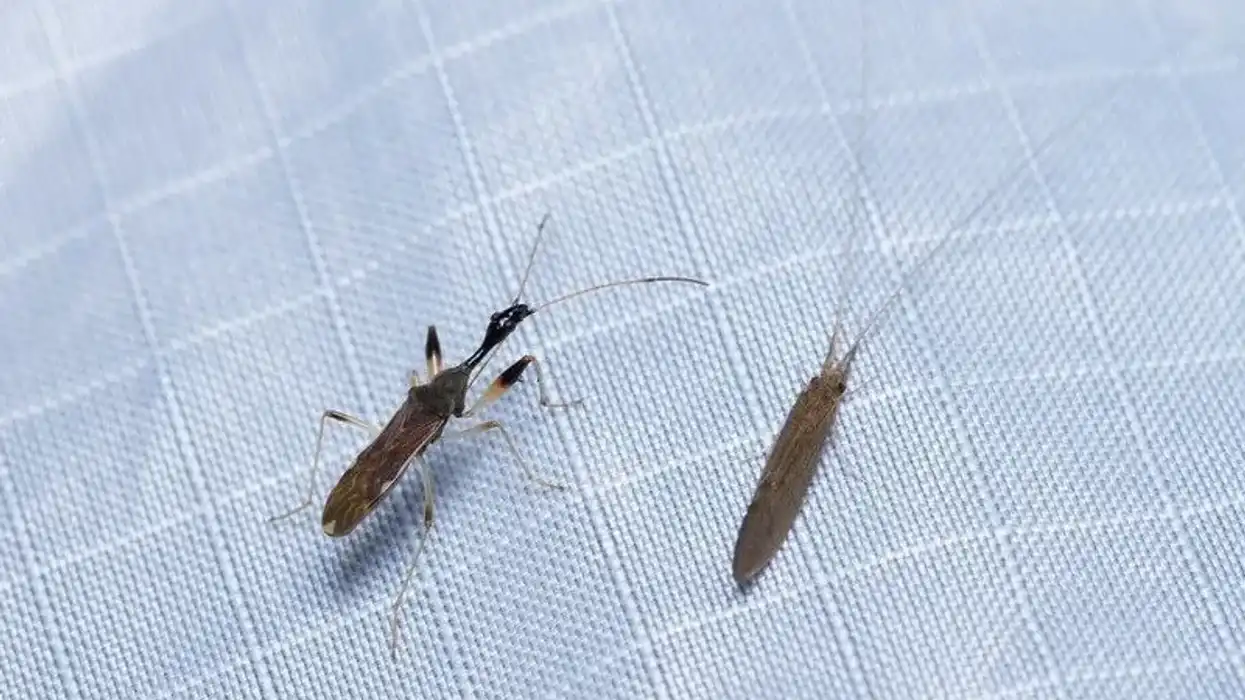Are you interested to know more about species like the Christmas beetle? If yes, then you are at the right place as we will talk about the American oil beetle.
This beetle species is related to the blister beetle, and it gets its name from the oily toxic chemical that it produces that causes blisters or swellings on human skin.
This chemical is cantharidin, and in the past, it was used by the Chinese as natural medicine. These oil beetles usually have a black or blue body with a really large abdomen, and on its top half, you can see a waistcoat that is a remnant of the wings that never developed.
This beetle is said to be found in most parts of the United States and usually inhabits the ground covered with grass, and it also survives on plants for food. It is said to be mostly seen during the spring.
However, having said that, we have very little information about these beetles, but we have tried to share everything we know about it.
If you find these beetles interesting, keep reading to find amazing American oil beetle facts. After you have finished reading this one, head to our other articles on animals like the tiger beetle and green June beetles.
American Oil Beetle Interesting Facts
What type of animal is an American oil beetle?
An American oil beetle is a form of blister beetle found in the United States.
What class of animal does an American oil beetle belong to?
The American oil beetle belongs to the class Insecta and to the genus Meloe.
How many American oil beetles are there in the world?
As a species with a small lifespan, it is hard to calculate its population, and so we don't know the exact number. However, we have come to know that several beetles of the family Meloidae are under the threat of becoming extinct and some are quite rare to find.
The main reason is thought to be the changing ecosystem which may have destroyed the habitat of these beetles.
Where does an American oil beetle live?
The American oil beetle is said to be found in almost all areas of the United States, but more studies need to be done on the insect. However, we cannot really say that it is endemic to one place.
What is an American oil beetle's habitat?
You can find American oil beetles in grass-covered areas and as flightless insects, you can find them slowly moving on the ground. In the UK, oil beetles are usually present around wildflower-rich grasslands and heathlands.
Who do American oil beetles live with?
Unlike many other insect species, beetles tend to have a solitary life. The adult may only come together during the mating season.
How long does an American oil beetle live?
We are yet to know about the lifespan of the American oil beetle. However, in general, most beetle species have a lifespan of around 13-44 days.
How do they reproduce?
We don't know much about the reproduction of American oil beetles, but we can assume that it follows a similar pattern to other members of its insect family. However, in the UK, the violet oil beetle is known for having a fantastic relationship with solitary mining bees.
The female creates a nest and lays eggs under the ground, and as soon as the eggs hatch, the larvae proceed to jump up and reach the wildflower.
The larvae hitch a ride on the bees with the hooks present on their legs. When inside the bee colony, these beetles live a good life on pollen and nectar until turning into an adult.
What is their conservation status?
The American oil beetle is Not Evaluated in any conservation list.
American Oil Beetle Fun Facts
What does an American oil beetle look like?
Even though there are slight differences in body size and shape, most oil beetles look similar. These beetles have a black or dark blue body and it's an abdomen-heavy species.
On the top half of its abdomen, you can see what could have been the wings, but these blister beetles are unable to fly. Most of these beetles also have kinked antennas.
How cute are they?
Unlike weevil beetles, we wouldn't call this species cute as they look quite similar to other oil beetles.
How do they communicate?
The most common form of communication found in beetles is through chemicals. Both female and male adult beetles are able to produce chemicals to contact with each other.
How big is an American oil beetle?
The average body length of the American oil beetle is around 0.27-0.66 in (7-17 mm). In comparison, similar-looking ground beetles have an average body length of around 0.02-2.59 in (0.7-66 mm).
How fast can an American oil beetle fly?
Unfortunately, these are wingless beetles, so it is unable to fly.
How much does an American oil beetle weigh?
We are yet to know about the average weight of these insects.
What are the male and female names of the species?
There are no specific names for a male American oil beetle or a female American oil beetle.
What would you call a baby American oil beetle?
Baby American oil beetles are known as grubs.
What do they eat?
We do not know much about the eating pattern of this species, but as oil beetles, they are a herbivore species. In America, oil beetles are known for feeding on crop plants as well as grass, alfalfa, tomatoes, and potatoes.
However, these can also be seen on flowers, and in the UK, oil beetles share an intricate relationship with the solitary bee.
Are they poisonous?
Yes, it is a species of blister beetles that are toxic or poisonous to humans and these beetles produce an oil-like substance that contains the chemical cantharidin which causes blisters on human skin.
Would they make a good pet?
For some reason, people have been keen on keeping oil beetles and blister beetles as pets. If you fancy an American oil beetle, you can think about getting on, but make sure to be careful around it and source it from ethical breeders.
You can try to find an oil beetle in a grass field, especially during the spring season when it is easy to spot this slow-moving creature.
Did you know...
The American oil beetle (Meloe americanus) has two subspecies, the Meloe americanus americanus and the Meloe americanus occidentalis.
Many people want ways to eliminate this species, but we would like you to note that oil beetles are at a serious threat of going extinct. If you see or spot one of these insects or its nest, please don't harm it.
The oily toxin produced by these insects has cantharidin which was once thought to be a remedy for dropsy or edema.
How many eggs do American oil beetle lay?
We don't know the exact egg count of the American oil beetle, but most female oil beetles lay about 1,000 eggs per season.
Are oil beetles bad?
We wouldn't call a species of beetles bad just because of its defense mechanism. However, as it's a blister beetle species, it does produce an oily caustic poison known as hemolymph from its joints.
This oily droplet contains cantharidin, a potent poisonous material that can cause blisters and swellings on human skin. You may have thought that its shiny body gave this beetle its name, but it's actually the oil droplets produced by it that gives it this name of oil beetle.
Here at Kidadl, we have carefully created lots of interesting family-friendly animal facts for everyone to discover! Learn more about some other Arthropods from our flatworms fun facts and stink bug Interesting Facts pages.
You can even occupy yourself at home by coloring in one of our free printable parts of a beetle coloring pages.
Thank you to Kidadler Mike Stoner for providing the image of an American oil beetle in this article.









